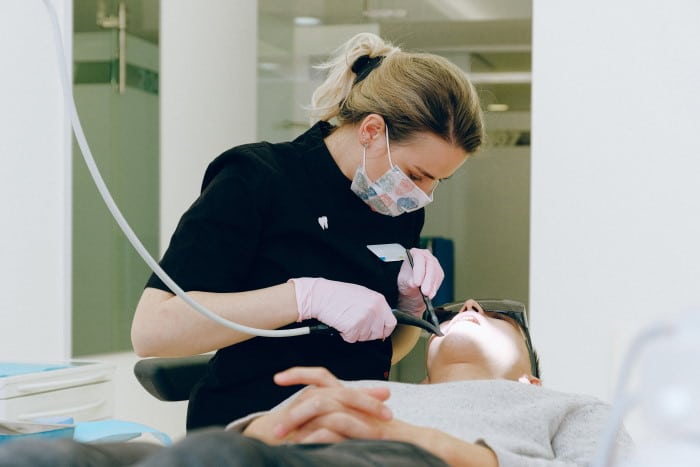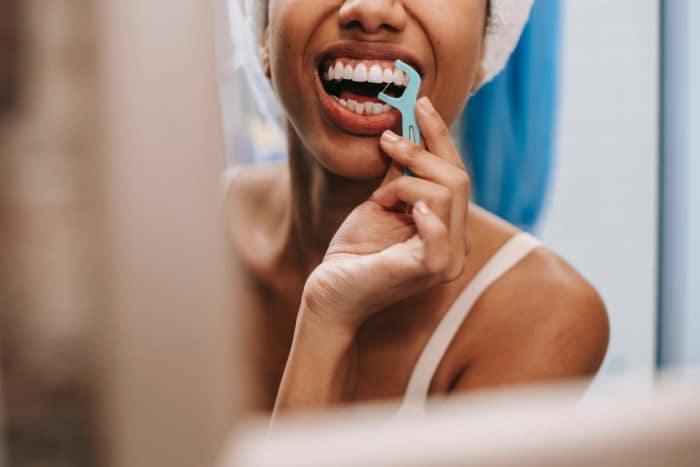How Often Dental Cleaning is Required for Healthy Teeth?
You brush your teeth and floss daily. You follow all the recommended steps to maintain healthy teeth. Is there still a need for professional dental cleaning? It’s a legitimate question because you’ll often hear dental professionals suggesting a dental cleaning done by professionals on top of your oral hygiene practices.
The reality is professional dental cleaning is a must – even if you brush and floss regularly. But how often do you need it done to support good oral health? This guide will answer your questions about dental cleaning and the frequency with which you should have this done.
What Happens During Dental Cleaning?
Professional dental cleaning is part of your annual dental check-up, which is performed at least once a year. This procedure is essential to promote and preserve the health of your teeth and gums. Regular cleaning can prevent tooth decay and gum disease.
A dentist performs dental cleaning in a dental office along with your comprehensive dental exam. The recommendation from the American Dental Association is to visit your dentist “regularly” for cleaning. The frequency of dental cleaning varies from person to person. Some require cleaning every six months while an annual clean is enough for most people.
Patients at a higher risk of gum disease must undergo more regular dental cleaning. Your dentist determines the frequency of your dental cleaning based on the results of your comprehensive exam.
A typical professional dental cleaning procedure involves three processes: cleaning, polishing, and fluoride treatment.
Cleaning is the first step of this dental procedure which involves removing tartar and plaque from your teeth. The dentist uses a specialized tool to access hard-to-reach areas, which you miss in your daily brushing. They will also use a specific flossing technique or tool to clean in between your teeth.
The next step is polishing. Your dentist uses a tool with rotating heads and a dental paste to make your teeth look cleaner and polished.
The fluoride treatment is the final step of the dental cleaning process. Fluoride is applied to your teeth in gel or paste form. Using fluoride helps to protect your teeth against cavities.
In addition to the above steps, your dentist might recommend additional products you could use at home as part of your daily dental routine. It’s important to follow your dentist’s recommendations at home, to maintain healthy teeth and gums.
How Often Should You Undergo Dental Cleaning?
The ideal frequency of professional dental cleaning is every six months or so. The frequency of the cleaning should give your dentist a chance to catch any signs of cavities or gum problems. Your dentist will also inform you about the urgency of addressing these problems.
The 6-month standard for getting dental cleaning is arbitrary. Dental experts recommend talking with your dentist about your risk factor and overall dental health condition. Some patients are at higher risk of dental disease and other gum problems than other people. You should get a customized plan from your dentist.
Some risk factors for tooth and gum disease include those who smoke tobacco regularly or are diagnosed with diabetes. If you have a family history of gum disease, you are at risk of developing one. Your dentist will talk to you about these lifestyle factors that could contribute to your risk for tooth and gum issues.
Is Too Much Cleaning Harmful?
The recommended frequency for professional dental cleaning is six months or so. What if you choose to undergo dental cleaning more than twice a year?
Currently, no research studies suggest too much dental cleaning is bad for your oral health. The only known risk is the possibility of increased tooth sensitivity, which is a common side effect of dental cleaning. More research should be done to support the claims that frequent dental cleaning could damage your tooth enamel.
An obvious disadvantage of regular dental cleaning is the expense. Traditional comprehensive dental insurance typically only covers up to two dental cleanings per year. If you choose to undergo cleaning more frequently than that, you have to pay out of your pocket.
Your dentist will recommend if you require dental cleaning more than twice a year based on the assessment of your oral health condition. If not, a more frequent dental cleaning won’t offer any benefit.
Tips for Caring for Teeth & Gums in Between Cleaning
Maintaining healthy teeth and gums should not just happen in the dentist’s office. Your daily oral hygiene practices play a vital role in caring for your teeth and gums. Keep in mind these tips for proper oral care in between your visits to the dentist for professional cleaning:
- Quit drinking soda. Two ingredients found in soda – phosphoric acid and citric acid – cause damage to your tooth enamel. When the enamel is damaged, you’re at a higher risk of developing cavities. Switch to drinking water instead, and it will also benefit your overall health.
- Quit smoking. Aside from drinking soda, smoking is another habit that can damage your teeth. Nicotine and tar can cause the deterioration of your teeth. If you are a frequent smoker, you are more likely to have tooth decay and gum disease. Smoking promotes bacterial production inside your mouth.
- Floss regularly. Make it a habit to floss after brushing your teeth. Food debris and plaque accumulate on your teeth over time. Brushing your teeth alone cannot remove food debris and plaque.
- Reduce your sugar intake. Sugar is one of the main culprits of tooth damage. Eliminate sugar and other sugary foods from your diet to lessen the risk of tooth decay and cavities.
- Know the proper brushing technique. Use a soft-bristled toothbrush and brush at a 45-degree angle. Use circular motions when brushing your teeth to target hard-to-reach areas. Brush your teeth for at least two minutes.
You must know the proper teeth cleaning habits in between dental cleanings. It will ensure that you won’t undo any of the work done by your dentist during the cleaning session.


